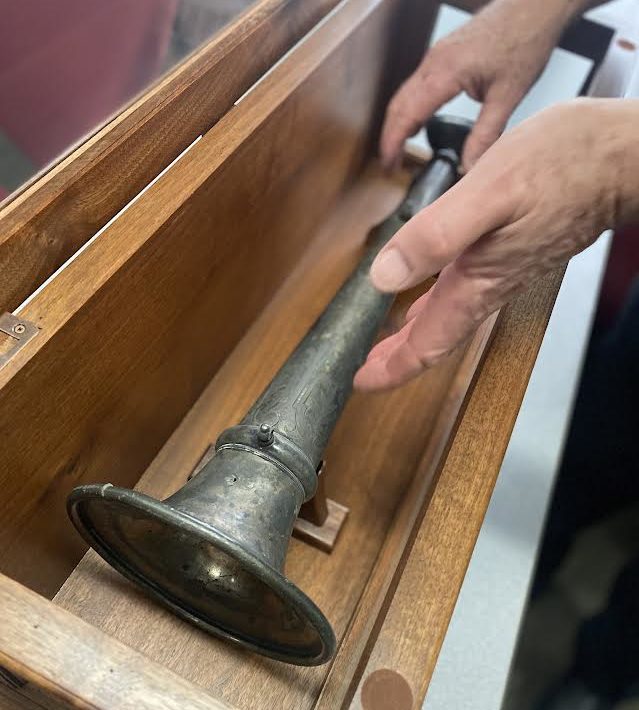One of the age-old tools for first responders is to reliably communicate during emergencies. Before the conveniences of technology, firefighters and officers would use “speaking trumpets” to amplify their voices over the noise and commotion of a fire scene to direct the company in effectively fighting the blaze.
On Tuesday, retired Bowling Green firefighter Stuart Warner presented the City of Bowling Green with an 1850s fire trumpet that had previously belonged to the Bowling Green Fire Division. Warner had been a volunteer firefighter student for Bowling Green in 1968.
As a favor to a colleague, he saved this historic fire trumpet, but had forgotten about it while serving in the Army. A few years ago, while going through his collection, Warner found the trumpet and decided, “this belongs back in Bowling Green.”

Warner has been a long-time collector and restorer of antique fire apparatuses, toys, and memorabilia. His restorations, including a 1919 Cedar Point fire engine, are on display at the Port Clinton Aviation Museum.
Bowling Green Fire Chief Bill Moorman greatly appreciated this donation. “This is a piece of Bowling Green history we don’t normally see,” the chief stated. “It is nice to welcome it back home.”
The Bowling Green Fire Division, which was established in 1834, is quite proud of its history – with historic pictures and memorabilia decorating the walls of the Court Street Fire Station. While the fire trumpet has not been a practical tool for fire stations for many years, many still pay homage to its important past.
Today the Bowling Green Fire Division uses collar pins with increasing numbers of trumpets to indicate rank. Lieutenants wear pins with one trumpet, captains wear pins with two, battalion chiefs receive three, the deputy chief wears a pin with four crossed trumpets, and the fire chief wears a pin with five.
The Bowling Green Fire Division plans to display the fire trumpet and other historical items in a display case once a new fire station is constructed.

